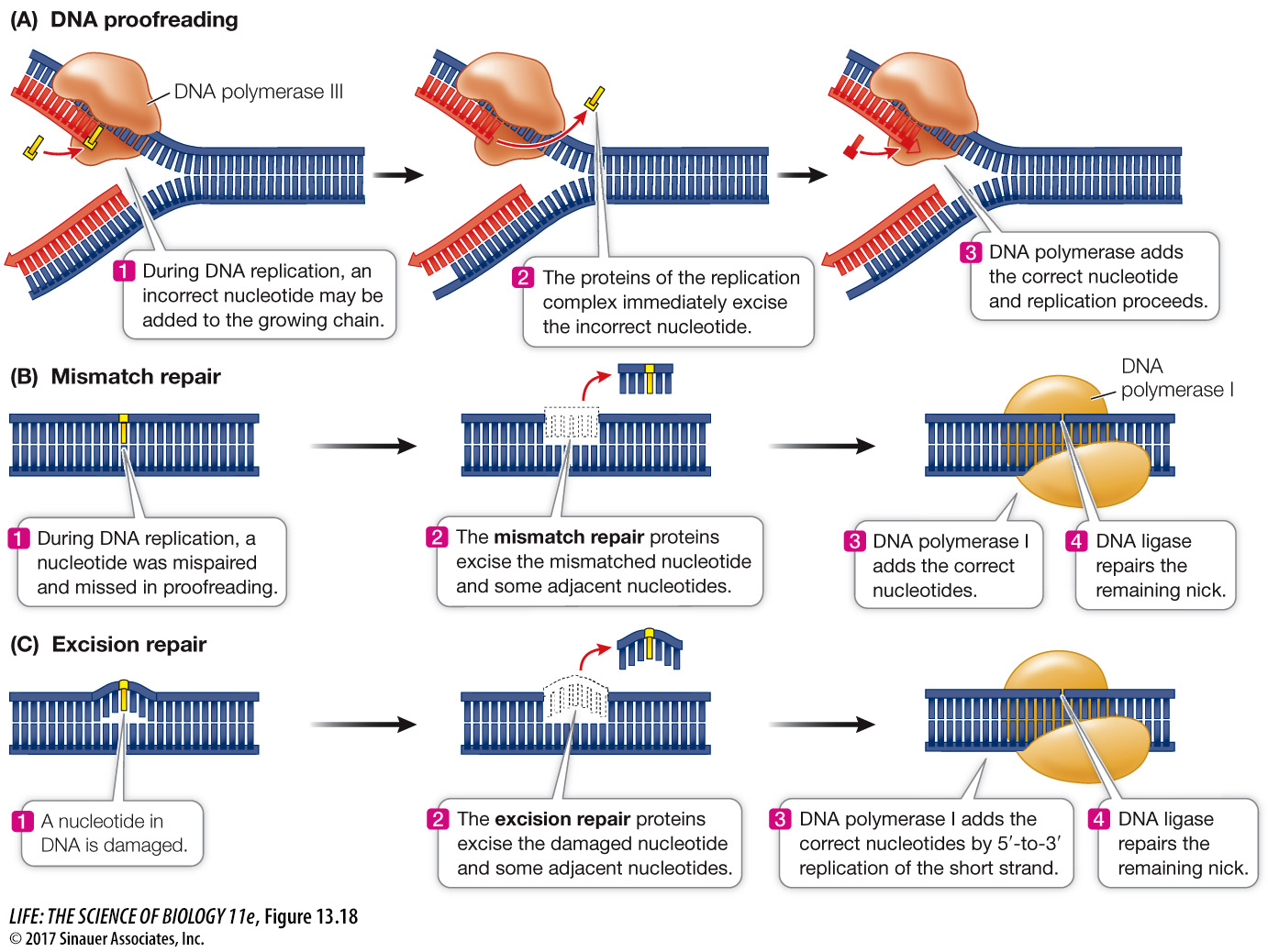Telomeres are not fully replicated and are prone to repair
As we will discuss in Key Concept 13.4, DNA may be damaged by radiation or chemicals. When this happens, DNA repair mechanisms are activated, and breaks exposing free 3′ and 5′ groups in DNA are rejoined via a combination of DNA synthesis and DNA ligase activity. So the ends of chromosomes are a potential problem: the DNA repair system might recognize the ends as breaks, and join two chromosomes together. This would create havoc with genomic integrity.
In many eukaryotes, there are repetitive sequences at the ends of chromosomes called telomeres. In humans, the telomere sequence is TTAGGG-
But there is another problem with chromosome ends. As you have seen, replication of the lagging strand occurs by the addition of Okazaki fragments to RNA primers. When the terminal RNA primer is removed, no DNA can be synthesized to replace it because there is no 3′ end to extend. In most cells, the short piece of single-

Question
Q: Why do the cells that form gametes express telomerase?
Shortened telomeres are unstable. Also, without telomerase there is unreplicated DNA. For these two reasons, gamete-
Each human chromosome can lose 50 to 200 base pairs of telomeric DNA after each round of DNA replication and cell division. After many cell divisions, the genes near the ends of the chromosomes can be lost, and the cell dies. This phenomenon explains, in part, why many cell lineages do not last the entire lifetime of the organism: their telomeres are lost. Continuously dividing cells, such as bone marrow stem cells and gamete-

Telomerase is expressed in more than 90 percent of human cancers, and may be an important factor in the ability of cancer cells to divide continuously. Since most normal cells do not have this ability, telomerase is an attractive target for drugs designed to attack tumors specifically. There is also interest in telomerase and aging. When cultured human cells are transformed with a telomerase gene that is expressed at high levels, their telomeres do not shorten. Instead of living 20 to 30 cell generations and then dying, the cells become immortal. It remains to be seen how this finding relates to the aging of a whole organism.